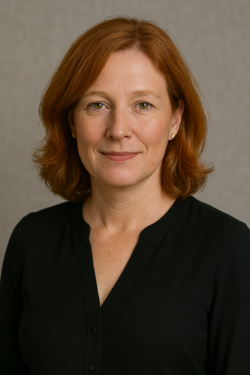Federal Enforcement Escalates as Chicago Creates Dedicated Healthcare Fraud Section
![Image: [image credit]](/wp-content/themes/yootheme/cache/72/xdreamstime_xxl_264185002-scaled-72764aa6.jpeg.pagespeed.ic.lHNekyPkp4.jpg)

The U.S. Attorney’s Office for the Northern District of Illinois has formally launched a standalone Healthcare Fraud Section, marking a strategic escalation in federal enforcement efforts targeting fraudulent billing, kickback schemes, and clinical abuse across the healthcare ecosystem. This development signifies an intensifying focus on prosecutorial continuity, data-driven enforcement, and accountability in healthcare finance.
The newly established section will operate independently but in close coordination with the Department of Justice’s Health Care Fraud Strike Force, already based in Chicago. Together, these entities represent a potent prosecutorial concentration in a district that has historically ranked among the most active in healthcare fraud litigation.
For health systems, private equity–backed medical groups, payers, and digital health vendors, the implications are clear: federal scrutiny is expanding, not only in volume but in sophistication. The cost of non-compliance is increasingly criminal.
From Distributed Oversight to Centralized Prosecution
Until now, healthcare fraud cases in the Northern District of Illinois were managed across multiple teams, with responsibility often shared among generalist prosecutors. The creation of a dedicated section, with six full-time Assistant U.S. Attorneys under seasoned leadership, signals a pivot toward specialization. In complex fraud matters involving clinical coding, reimbursement rules, and regulatory interplay, that matters.
By housing domain expertise within a cohesive unit, the office is better positioned to move quickly on high-dollar cases, coordinate with federal agencies like HHS OIG, and build cross-district prosecutions with forensic and actuarial depth. The newly appointed section chief and deputy chief bring decades of experience in healthcare fraud, which includes cases involving alleged billions in transnational schemes.
This structure reflects lessons learned from large-scale takedowns. The DOJ’s most recent National Health Care Fraud Enforcement Action charged over 320 defendants in schemes totaling more than $14.6 billion. That operation involved multiple strike forces but revealed the advantages of having localized, embedded fraud units working in tandem with federal hubs.
Corporate Actors Now in the Crosshairs
Historically, the DOJ’s focus in healthcare fraud has leaned heavily toward individual bad actors: physicians submitting inflated claims, pharmacies falsifying scripts, or labs engaging in billing kickbacks. But recent statements by senior officials indicate a broader enforcement posture.
For the first time, the Criminal Division’s Health Care Fraud Unit has prioritized corporate accountability, aiming at institutions, not just individuals. This includes hospitals, nursing home chains, managed service organizations, and even AI-driven platforms that may facilitate improper claims or misrepresentations.
The trend mirrors recent DOJ shifts in other industries, where corporate monitorships, deferred prosecution agreements, and clawbacks have become standard tools. Healthcare executives should expect similar mechanisms to become part of fraud resolution strategy, particularly in False Claims Act (FCA) matters.
A 2024 OIG report warned that the rapid proliferation of telehealth, remote diagnostics, and digital therapeutics has created new fraud vectors, many of which are poorly understood by traditional compliance frameworks. As the DOJ layers in AI auditing tools and advanced claims analytics, institutional risk exposure grows, even when bad actors operate downstream in the referral chain.
Clinical Exploitation Now a Key Narrative
Beyond billing irregularities and coding manipulation, federal enforcement is placing increased rhetorical and legal emphasis on clinical harm. Prosecutors are no longer satisfied with documenting financial losses to Medicare and Medicaid; they are surfacing patient exploitation, unnecessary procedures, and compromised care quality as core arguments in fraud cases.
According to U.S. Attorney Andrew Boutros, the new section’s mandate includes aggressive pursuit of schemes “that often involve the exploitation of patients through unnecessary and/or unsafe medical tests and procedures.” This language sets the stage for indictments that merge financial fraud with endangerment.
This framing resonates with recent DOJ efforts in the post-acute and behavioral health sectors, where prosecutors have targeted not just billing misconduct, but also the use of fraudulently obtained funds to expand operations, increase patient volumes, and perpetuate clinical risk.
For compliance officers, this shift increases the need for integrated risk scoring that ties claims anomalies to patient safety metrics, highlighting not only financial irregularity but potential clinical compromise.
What Organizations Should Do Now
Healthcare leaders should view the formation of Chicago’s Healthcare Fraud Section not as a regional development, but as a scalable model the DOJ may replicate elsewhere. For high-exposure organizations, especially those operating across state lines or contracting with government payers, the message is clear: proactive fraud prevention is no longer optional.
Key recommendations include:
- Elevate fraud compliance beyond billing. Fraud risk now includes clinical practices, tech stack behavior, and care delivery models. Compliance programs must expand accordingly.
- Audit data pipelines. Many enforcement actions now begin with claims pattern anomalies detected through CMS data mining. Organizations should replicate these analyses internally before regulators do.
- Integrate compliance with digital product teams. For health tech vendors and AI-enabled platforms, design choices in decision support or automated billing logic can create inadvertent fraud exposure.
- Prioritize interdisciplinary response teams. Fraud prevention must include legal, clinical, IT, and compliance voices, not operate in silos.
- Prepare for corporate liability. DOJ strategy now includes enterprise-level consequences: settlements, reputational risk, and governance interventions.
Systemic Fraud Demands Structural Defense
The DOJ’s latest move reflects the scale and persistence of healthcare fraud. With more than $27 billion in suspect billing identified across 27 districts since 2007, and with fraudulent behavior now reaching into transnational networks, traditional compliance approaches are insufficient.
The healthcare enterprise is now part of a national fraud-prevention strategy. Executives must respond not just with policy, but with operational, technological, and cultural reinforcements. The newly created Healthcare Fraud Section in Chicago may be the first of its kind, but it will not be the last.